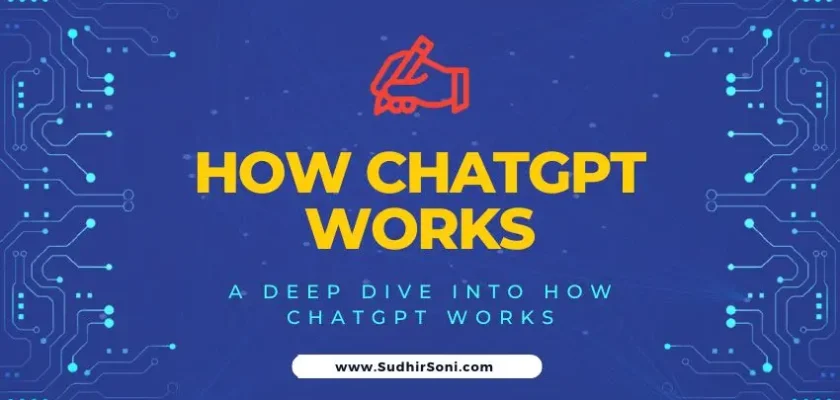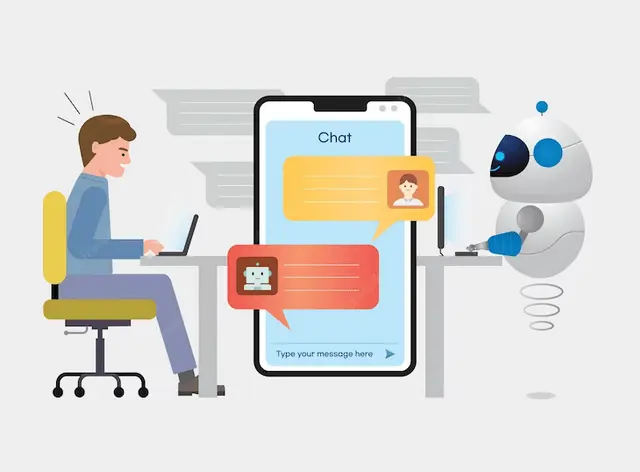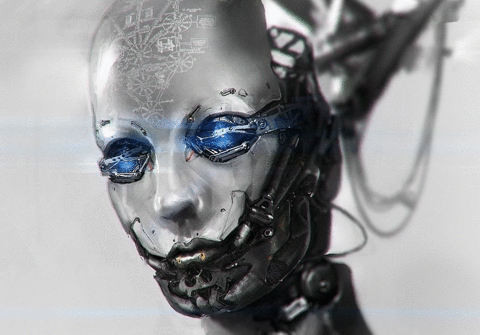How ChatGPT Works: In the labyrinth of artificial intelligence, ChatGPT stands as a beacon of conversational prowess, captivating users with its seemingly human-like interactions. But how does this marvel of technology actually work? Join us on an exploratory journey as we dissect the intricate architecture of ChatGPT and unravel the profound role of deep learning in shaping its linguistic brilliance.
Decoding the Layers: How ChatGPT Functions
At its core, ChatGPT operates on a foundation of deep learning and neural networks. The model is part of the transformer architecture family, renowned for its efficiency in processing sequential data like language. To comprehend the magic of ChatGPT, one must first understand the concept of transformers.
Transformers: The Backbone of ChatGPT
Transformers, introduced by Vaswani et al. in 2017, revolutionized natural language processing. They rely on a mechanism called self-attention, enabling the model to weigh the importance of different words in a sentence. This breakthrough enhances the model’s ability to grasp context and relationships within text.
In the case of ChatGPT, this self-attention mechanism becomes the linchpin of its conversational finesse. As the model processes input text, it allocates attention to various words, capturing the nuances of language structure and context.
GPT Architecture: A Symphony of Layers
The “GPT” in ChatGPT stands for “Generative Pre-trained Transformer,” emphasizing its transformative architecture. The model consists of layers, each housing self-attention mechanisms and feedforward neural networks. During pre-training, ChatGPT absorbs vast amounts of internet text, honing its ability to predict what comes next in a sentence.
When a user inputs a prompt, the model utilizes its pre-trained knowledge to generate coherent and contextually relevant responses. The generative nature of ChatGPT allows it to create original content, making each interaction dynamic and personalized.
The Role of Deep Learning: Unveiling the Cognitive Machinery
Deep learning serves as the cognitive machinery that powers ChatGPT’s linguistic brilliance. Let’s unravel the key components that make deep learning a driving force in this conversational AI.
Neural Networks: Mimicking the Human Brain
At the heart of deep learning lies the concept of neural networks, drawing inspiration from the intricate web of neurons in the human brain. ChatGPT’s neural network processes information through layers, with each layer contributing to the understanding and generation of language.
The training process involves fine-tuning these neural networks, adjusting the weights and biases to optimize the model’s performance. Through this iterative learning, ChatGPT refines its ability to comprehend and generate diverse and contextually rich responses.
Transfer Learning: A Leap Ahead
One of the key innovations in ChatGPT’s architecture is transfer learning. The model is pre-trained on a massive dataset to learn the intricacies of language. This pre-training phase equips ChatGPT with a broad understanding of grammar, context, and semantics.
During fine-tuning, the model is then specialized for specific tasks or domains. This transfer learning paradigm allows ChatGPT to leverage its pre-existing knowledge while adapting to the nuances of diverse user inputs.
In Action: Conversing with ChatGPT
To witness the magic of ChatGPT in action is to engage in a dialogue that blurs the lines between human and machine. As users input prompts, the model dynamically crafts responses, drawing upon its vast reservoir of language knowledge.
The self-attention mechanism allows ChatGPT to contextualize each word in a prompt, discerning the relationships that govern language. The generative nature of the model ensures that responses are not just pre-programmed replies but authentic and context-aware.
Challenges and Future Frontiers
While ChatGPT has achieved remarkable feats, it isn’t without challenges. The model may sometimes produce responses that seem plausible but lack factual accuracy. Navigating these limitations remains a focal point for further advancements.
As we navigate the intricacies of ChatGPT’s workings, it’s clear that the journey is far from over. The future promises even more refined conversational AI, with enhanced contextual understanding, reduced biases, and increased collaboration between users and machines.
In conclusion, the symphony of ChatGPT’s operation is orchestrated by the harmonious interplay of deep learning, neural networks, and transformer architecture. As we peer into the inner workings of this linguistic virtuoso, we stand on the precipice of a future where AI-driven conversations seamlessly integrate into the fabric of our digital interactions. The story of ChatGPT continues, and the narrative it weaves is a testament to the boundless possibilities when technology and language converge. 🌐
Dive into the Well of your Thoughts and Let’s Paint our Digital Canvas Together! ️
Your Musings, Questions, or Simple Hellos are the Strokes that Shape our Shared Narrative. ✨ Click “Contact Me” to Contribute, and Don’t Forget to Leave a Comment Below!
Until our Next Masterpiece, Keep Reading! ✨
– Sudhir Soni



